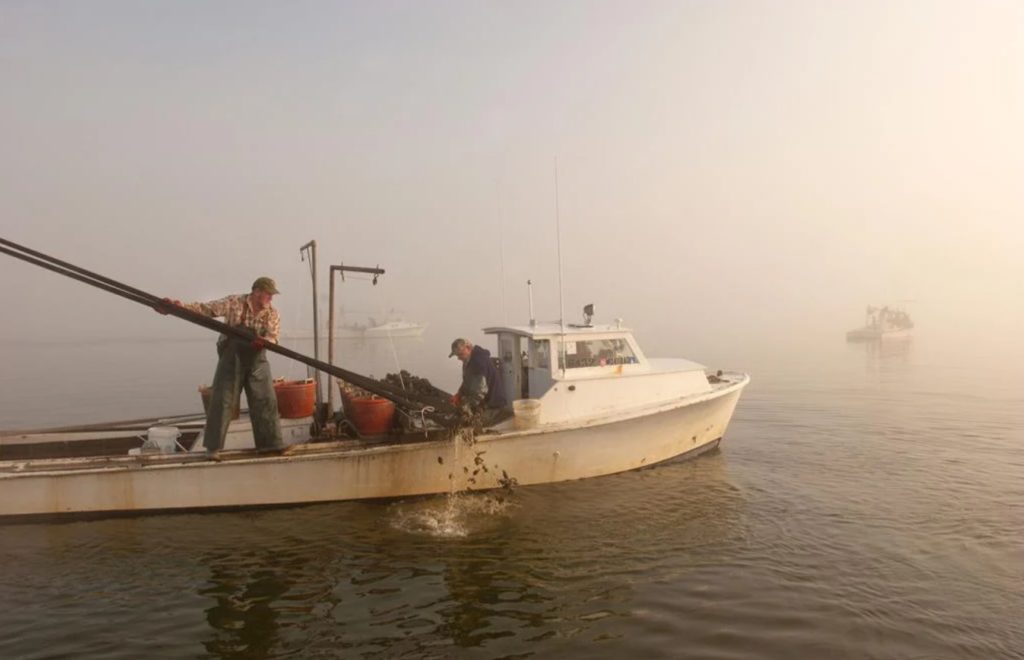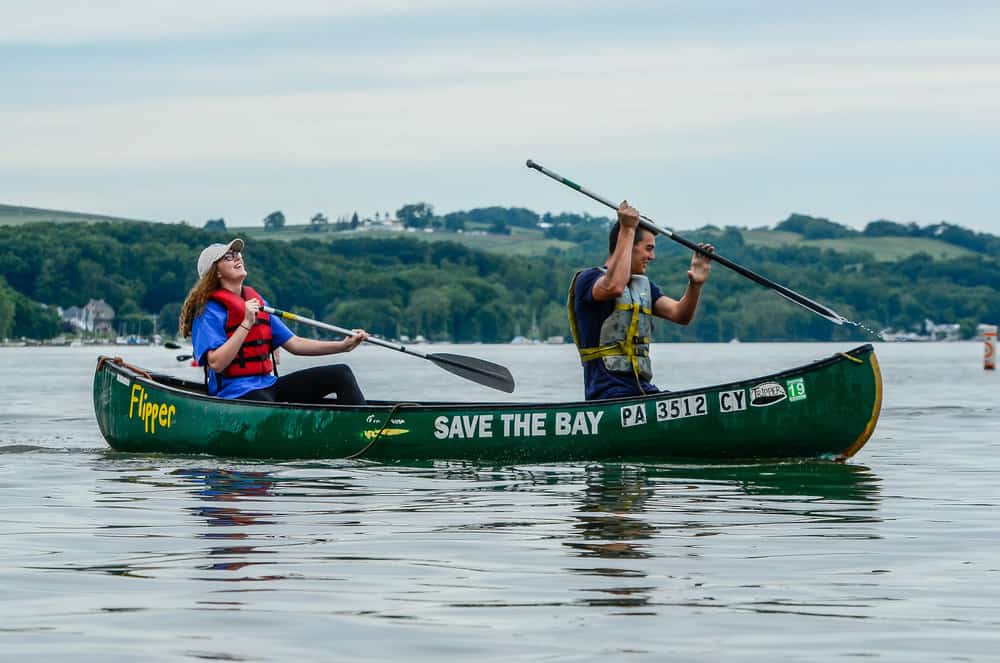By Timothy B. Wheeler, Bay Journal News Service
The Chesapeake Bay’s oyster population is still a long way from what it once was, but lately it’s shown signs of a rebound. Maryland and Virginia watermen harvested more of the bivalves in the most recent season than they had in more than three decades.
So why is Seafood Watch, a widely consulted guide to sustainable seafood, recommending that people avoid eating wild-caught oysters from the Bay?
The Monterey Bay Aquarium, which produces Seafood Watch, isn’t saying. A spokesperson for the California aquarium declined a request for an interview to answer questions about its draft report, which includes a recommendation to shun oysters from Maryland or Virginia.
“At this time, we are not able to comment on the draft assessment as the report may change based on feedback we receive in the public comment period,” the spokesperson said by email.
The aquarium was taking feedback through May 22. Since making its draft report public in April, it has received an earful from watermen, fishery managers, scientists and even other conservationists. Critics contend it erroneously portrays the Bay’s oyster population as overfished and poorly managed, a characterization they say even in draft form is hurting the region’s seafood industry.
“They have no idea what they’re doing,” said Robert T. Brown Sr., president of the Maryland Watermen’s Association, “… and they’re interfering with people’s livelihoods.”
Since 1999, the Monterey Bay Aquarium’s Seafood Watch program every few years has been offering what it says are science-based recommendations on which fish and seafood across the United States are sustainable “best choices” or “good alternatives”—and which should be avoided because of the risk of that species’ depletion or of harm to the marine ecosystem. It distributes about 2.5 million printable online guides every year aimed at influencing the purchasing decisions of nonprofit organizations, businesses and consumers.
In its last assessment in 2018, Seafood Watch rated oysters from Maryland and Virginia a good choice, despite some concerns, for those who care about sustainable seafood.
The new draft assessment downgrades those recommendations, citing “high concern” for the abundance of oysters in both states and deeming their public fisheries management ineffective. It even finds fault with the methodology Maryland has used in assessing the abundance of its wild oyster stock and whether it’s being overharvested.
Officials with the Maryland Department of Natural Resources say no one from the aquarium contacted them in developing the new assessment, and they were stunned to learn of the “avoid” recommendation.
“There’s missing information, there’s outdated information. They have misinterpreted information, and they have failed to live up to their own standards of using the best science and collaborating,” said Kristen Fidler, assistant DNR secretary for aquatic resources.
Mike Wilberg, a fisheries scientist with the University of Maryland Center for Environmental Science who led the development of DNR’s stock assessment, said he thought the Seafood Watch drafters applied an overly broad and uneven brush when rating the sustainability of oyster stocks along the East Coast. He said they failed to appreciate the complexities of the Bay’s oyster population and how it varies from one place to another.
“Some of the things we were criticized for [by Seafood Watch] are things we were praised for in the expert review of our stock assessment,” he noted.
“I applaud their efforts to get consumers to make conscious decisions [about sustainability],” Wilberg added. “Unfortunately, with all this stuff, the devil is in the details.”
Roger Mann and Mark Luckenbach, a pair of veteran oyster biologists with the Virginia Institute of Marine Science, likewise contend that the Seafood Watch ratings of their state’s fishery are “based on old data and are entirely inappropriate.” The data cited by the report’s drafters in deeming oyster abundance “a high concern” was more than a decade old, they pointed out.
JC Hudgins, president of the Virginia Waterman’s Association, said that the Virginia Marine Resources Commission and members of the seafood industry “do a lot to keep the Eastern oyster a sustainable species,” even as the state’s harvest from public fishery areas in the 2022–23 season topped 300,000 bushels for the first time in 35 years.
Since 2018, when Seafood Watch rated Virginia oysters a good choice, the fishery has steadily improved every year, Hudgins said. Last year, he noted, reef surveys found oyster densities at levels not seen since before diseases struck in the late 1980s and triggered a catastrophic decline in population and habitat.
Brown, head of the Maryland watermen’s group, said he believed the Maryland oyster recommendation was also based on outdated information. In the six-month 2022–23 season that ended March 30, watermen harvested more than 600,000 bushels, the most since 1986–87.
Even conservationists, who have at times voiced their own criticisms of oyster management in the Bay, have qualms about the draft Seafood Watch recommendation.
Allison Colden, the Chesapeake Bay Foundation’s Maryland director and a fisheries biologist, noted that conditions for oyster reproduction and survival have been on the upswing lately, with very low mortality rates from the once-devastating diseases MSX and Dermo.
Even so, Colden said, the Seafood Watch assessment “does highlight some of the lingering concerns CBF has had and still has with the fishery.” Though only a few areas are still experiencing overfishing, one of those is Tangier Sound, where the majority of Maryland oysters are harvested.
This article first appeared May 25,2023 and you can read it in full at Bayjournal.com. It was distributed by the Bay Journal News Service.



